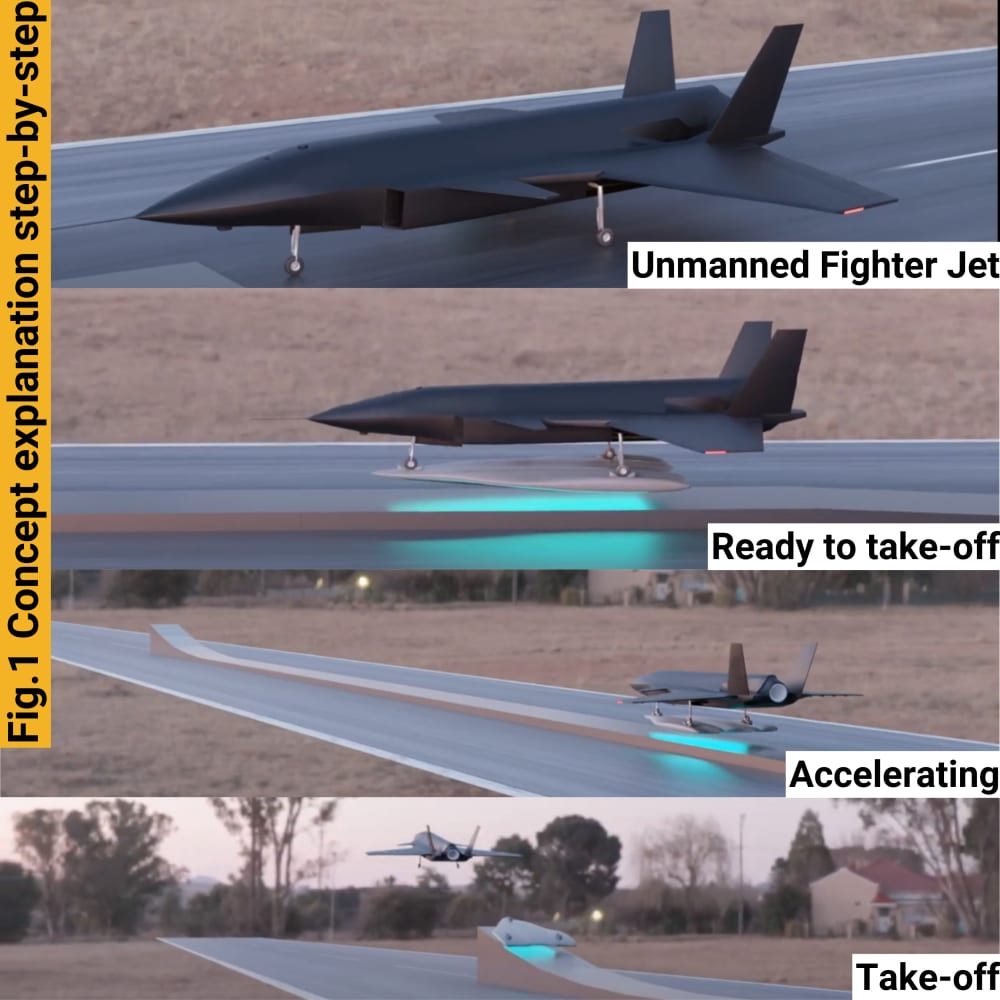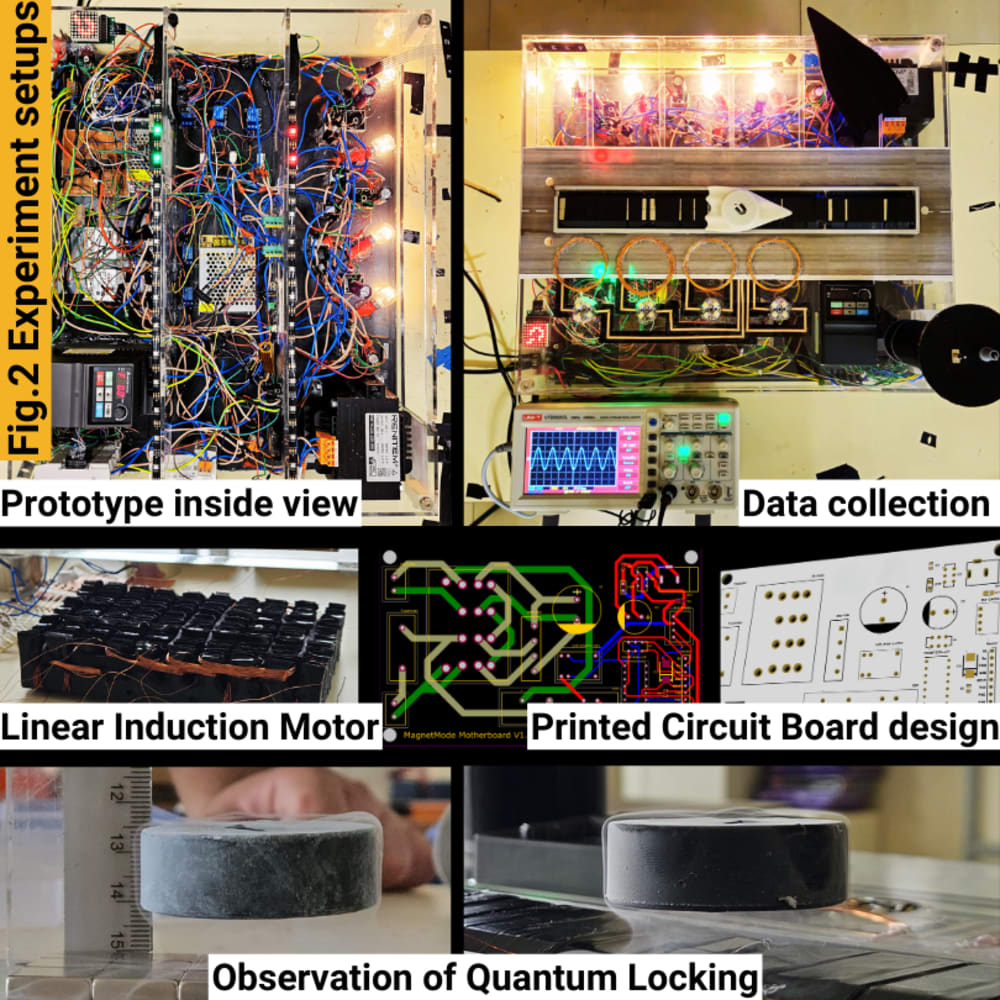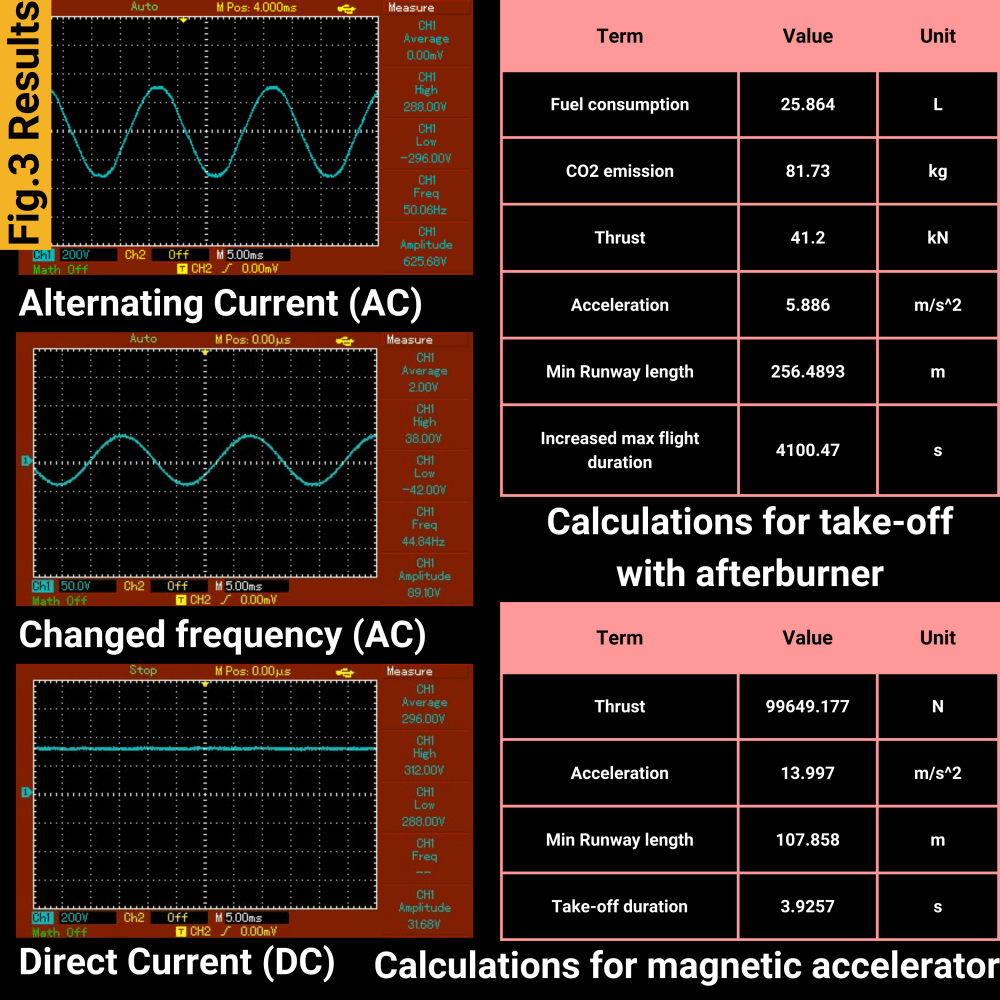The most fuel-consuming phase of flight, in terms of liters per second, is take-off. With the increasing popularity of Unmanned Aerial Vehicles (UAVs) and Unmanned Fighter Jets, the need for longer endurance is a common challenge. Saving fuel during take-off means extending flight time, providing UAVs with more flexible mission capabilities for both military and commercial operations. Current researchers are focused on improving aerodynamic performance, developing better routing algorithms, and increasing component efficiency to enhance endurance.
We propose a new way to enhance endurance with a magnetic accelerator system to save fuel during take-offs. This system also enables UAVs to launch from shorter runways. Our analysis of the "Kızılelma" unmanned fighter jet demonstrates a savings of approximately 25 liters of jet fuel, potentially increasing flight time by up to 23%, or about one hour. Additionally, our system reduces the required runway length by 4.5 times, down to just 110 meters. Detailed results from our calculations and experiments can be seen in Figure 3.
Compared to existing technologies like EMALS, currently used by the US Navy on the USS Gerald R. Ford aircraft carrier, our system innovates by combining magnetic levitation and thrust within a single set of coils. This patent-pending technology significantly reduces costs, by up to 100 times, due to minimal infrastructure on runways and minimal component requirements for manufacturing. Because of the costs and the challenges on implementation, EMALS is not a widespread technology. Our concept includes a “magnetic accelerator” and a "module" integrated with the UAV to facilitate acceleration. A detailed demonstration of the concept can be seen in the video.
For levitation, we utilize superconductors to achieve quantum locking, while linear induction motors generate thrust. Both forces, levitation and thrust, are produced by rapidly alternating between alternating current and direct current in the coils. The entire magnetic accelerator system is compact enough to fit into three standard containers, allowing for quick deployment and readiness within days.
This capability offers a strategic advantage in warfare scenarios. For instance, in the recent Ukraine-Russia conflict, 11 Ukrainian runways were destroyed within three months, taking months to repair. With our technology, their airspace could have been operational within days. Additionally, we are not affected by rough weather conditions like rain and icing, allowing for even further operational flexibility.
Our magnetic accelerator system has the potential for widespread adoption in military bases and cargo stations worldwide, pioneering a new era of unmanned air bases. It is clear that this technology will initially be used by governments seeking to enhance their current air bases or gain airbase functionalities on existing military bases. Note that the US has 750 military bases around the globe.
We have already built a scaled prototype to gather data (Figure 2) and have consulted with industry experts, including chief engineers, F-16 pilots, and prominent figures in aviation, who have expressed a strong need for such innovation. We believe with all the strategic and competitive advantages it provides, this technology has the potential to shape the future of aerospace.
Video
Like this entry?
-
About the Entrant
- Name:Kaan Turkover
- Type of entry:teamTeam members:
- Osman Kaan Ezgu
- Gurkan Eren Bozdemir
- Patent status:pending








